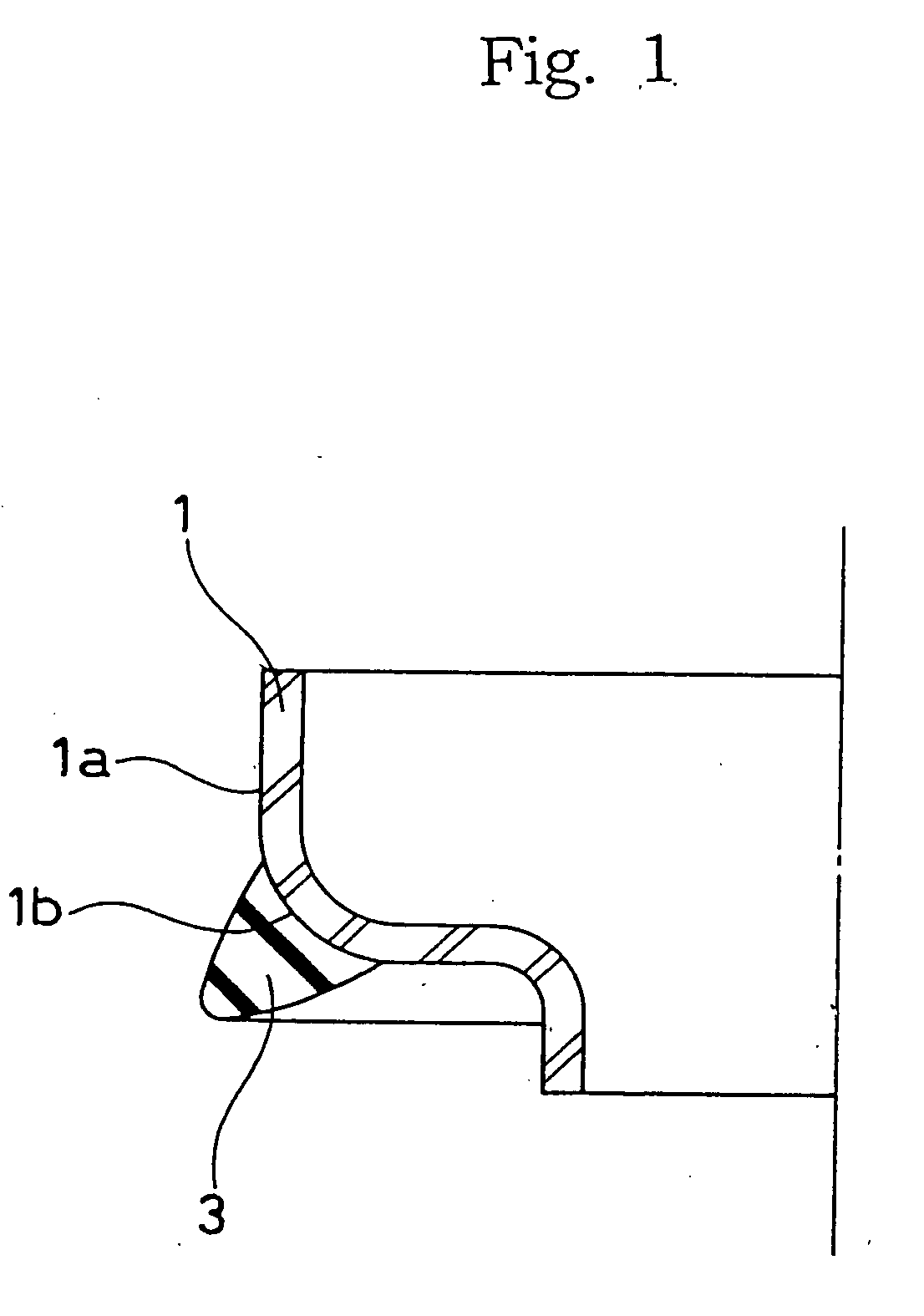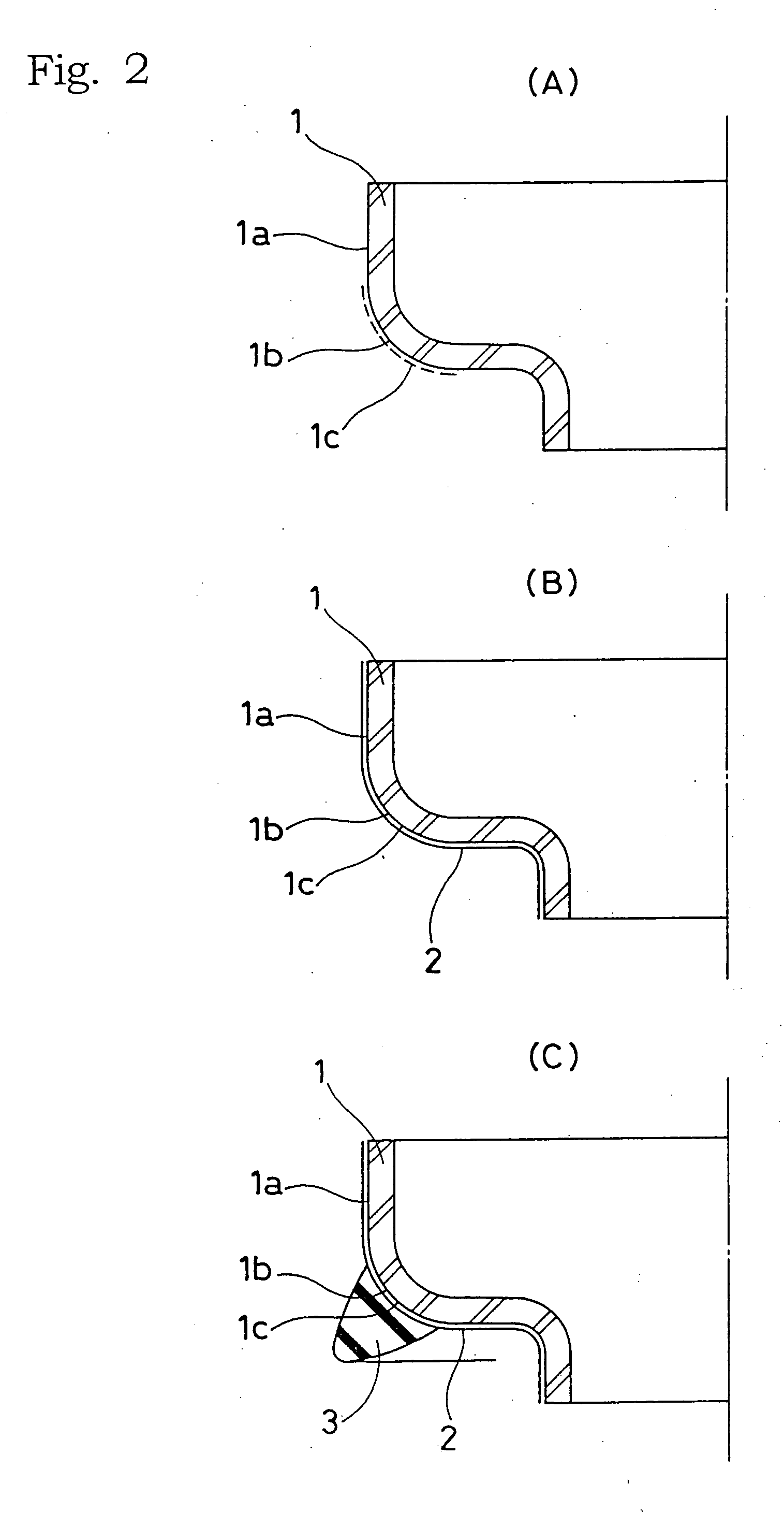Metal part and surface treating method thereof
a surface treatment method and metal technology, applied in the direction of insulating substrate metal adhesion improvement, manufacturing tools, transportation and packaging, etc., can solve the problems of insufficient adhesive inability to form a good adhesive layer, weak contact force between the metal and the adhesive agent, etc., to achieve increase the surface roughness, increase the anchoring effect, increase the surface area
- Summary
- Abstract
- Description
- Claims
- Application Information
AI Technical Summary
Benefits of technology
Problems solved by technology
Method used
Image
Examples
first embodiment
[0051]FIG. 1 is a half cut cross sectional view of a product such as a sealing apparatus provided with a metal part in accordance with a first embodiment of the present invention, and FIGS. 2A, 2B and 2C are schematic views showing manufacturing steps of the product in this order.
[0052] As shown in FIG. 1, a metal part in accordance with the embodiment is constituted of a metal ring 1 formed by punching and pressing a rolled steel corresponding to a raw material, and a surface roughness (also simply called as a roughness, not shown) which is determined in the following description is formed in a portion (a rubber adhesion portion) 1b in a surface 1a of the metal ring 1 to which a rubber 3 is adhered.
[0053] As shown in FIG. 2A, the metal ring 1 with a surface roughness 1c being formed in the rubber adhesion portion 1b is next exposed to an adhesion treatment, or a zinc phosphate treatment or a shot blast treatment and an adhesion treatment, as shown in FIG. 2B, whereby an adhesive ...
second embodiment
[0085]FIG. 5 shows a half cut cross section of a metal ring 1 corresponding to a metal part in accordance with a second embodiment of the present invention. A surface roughness 7 is formed in a contact surface 1d corresponding to a portion of a surface of the metal ring 1. An illustrated metal ring 1 is structured such that an outward flange-like collar portion 5 is provided in one end in an axial direction of a tubular portion 4 and an inward flange-like collar portion 6 is provided in another end in an axial direction of the tubular portion 4. Since an end surface of the latter inward flange-like collar portion 6 is considered as a contact surface 1d which possibly contacts with another metal ring (not shown) to be bonded, the surface roughness 7 is provided in the contact surface 1d.
[0086] The metal ring 1 is formed, as shown in FIG. 6, by punching and pressing a rolled steel 1′ corresponding to the raw material, and a manufacturing apparatus 11 thereof is, for example, structur...
PUM
| Property | Measurement | Unit |
|---|---|---|
| surface roughness | aaaaa | aaaaa |
| surface roughness | aaaaa | aaaaa |
| surface roughness | aaaaa | aaaaa |
Abstract
Description
Claims
Application Information
 Login to View More
Login to View More - R&D
- Intellectual Property
- Life Sciences
- Materials
- Tech Scout
- Unparalleled Data Quality
- Higher Quality Content
- 60% Fewer Hallucinations
Browse by: Latest US Patents, China's latest patents, Technical Efficacy Thesaurus, Application Domain, Technology Topic, Popular Technical Reports.
© 2025 PatSnap. All rights reserved.Legal|Privacy policy|Modern Slavery Act Transparency Statement|Sitemap|About US| Contact US: help@patsnap.com



